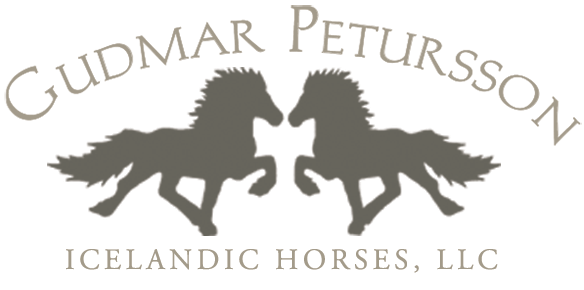I have a horse with Summer Eczema. How do you recommend I take care of it?

Here is how we take care of horses at our farm:
Any horse that is not too fat or does not have any sign of SE goes out every night about 7 or 8 pm. They are put in again the next morning between 6 and 9 am. While staying inside, each horse hase its own fan, which we turn on only if it is hot. The stalls are cleaned every single day; we also have automatic fly spray come on about four times a day. Therefore, the barn does not have many flies at all.We have been using different fly sprays, RepellX, Tri-tec14, and now we are using Pyranha, which is supposed to be very good.
A horse has never developed SE at our barn, although I have seen some of it starting (maybe a little scab on the stomach). If this occurs, the horse goes into the group with the fatties, the horses we keep in most of the time (with their fans going and automatic fly spray 4 to 5 times a day). They are put out for a few hours every single day during the the time of day when it is hottest; but remember, it is during dawn and dusk when flies are most aggressive. It is not the heat that bothers the horses so much. Now, some people are going to say how bad a person I am to keep them in so much, or my horse does not want to stay in. Well, of course the horses like to stay out most of the time. I sometimes say that horses are like little kids: you give them an inch and they take a mile. If your kid had a sun eczema, I am sure he would like to be out more than you would let him. I am doing my horse a favor by keeping him in so that he doesn’t have a breakout. In the long run, it saves them a lot of grief, even though they might not appreciate it so much at the time. Personally, I look at the summers in the US like the winters in Iceland, where the horses are kept in away from the cole so that we’re able to ride them (because you don’t want to put a sweaty horse out to cold winter weather). During the winter, spring, and fall, your horse can be outside as much as you like him to be; we are only talking about 4 months out of the year.
Before letting them out, we put fly spray on them, and if there are some places where they have open skin or eczema, we put Swat on those spots. By doing it this way, every horse we have gotten with SE goes home almost completely free of it. I also believe that flies are attracted to the sweat of the horse, which is why we always hose them off with clean water after each ride, to get the sweat off and also to cool them down, of course.
I do believe that if you have a horse that does not have SE, you can make your care quite a lot easier than we are doing it. We are training these horses every day, and that is part of the reason we put them up in a stall. What you need to do is to have a shed for the horses in which they can get away from the flies totally; that does not mean a tree or by a wall. They need to be able to go into some place where there are no flies because I believe that SE does not start so easily if the horses are kept away from the fly’s part of the day so they can always recover between fly bites.
Here is something else that we need to keep in mind. As you probably have noticed, Icelandic horses (at least most of them) eat as long as there is grass in front of them, so it is not enough to provide them with this fly-free place if there is free access to it from the pasture. They will just stay outside and eat, even though the flies are eating them up. So either you have to close them in this place or do like one very good friend of mine here in Kentucky did after I advised him to do so.
He has a dry lot where there is no grass, only gravel or sand, just so it does not get muddy. He puts the horses in there every morning, and from there they can go into their stalls where the fan is going. These horses always go into the stalls, and they sometimes stay all in the same stall, even though there are two stalls, but they are totally bug free.
I can tell you another story about another friend of mine here in Kentucky. She has a few Icelandics. For the last couple of years, she has been keeping them in a pasture where there is no shade except for some trees, and there is also a dirty pond there. Two of her horses developed SE. Last summer I told her, “Next spring before they get SE, bring them up to the upper pasture where they can go into the barn and where there is no dirty pond.” She did that and they did not get any SE at all.
Here are my thoughts on SE:
- The important thing is to stop it before it starts.
- Take your horse away from the fly’s part of the day, even though he has no sign of SE. If he has a problem keeping weight on, you have to make it up with enough hay or grain supplements or both.
- Just by keeping an eczema-free horse inside away from flies for just half a day can have a great positive effect on keeping your horse from ever getting eczema, because he is not spending ALL of his time defending against flies.
- Wash the sweat off the horse after each ride.
- And, of course, use fly spray.
- If the horse already has SE: Keep him in most of the time, but make sure to turn him out for at least a couple of hours every day.
- Give him a bath once in a while!
- Keep fly spray on him, and always have the SE spots covered with something like Swat.
- Keep everything around the horse as clean as possible, and keep fans on him.
- Just by keeping the eczema horse in at night (especially at dawn and dusk!) makes a huge difference!!
There are two things that have been a common misunderstanding concerning the Icelandic horse. That is, they don’t need the same care as other horse breeds (e.g., can be left out 24/7 in some field with no shelter) because of their hardy nature. The other is they do not require any kind of grain or feed supplement. Although these horses ARE very hardy, and can SURVIVE under harsh conditions, that does not mean that they do not deserve the same care and treatment as other horses. Any horse needs a shelter from the sun and wind. The grass and hay in Iceland has many more vitamins and minerals than most hay in America. It is the high cellulose content in some hays that can cause founder, NOT because these horses cannot handle protein or good quality hay.

